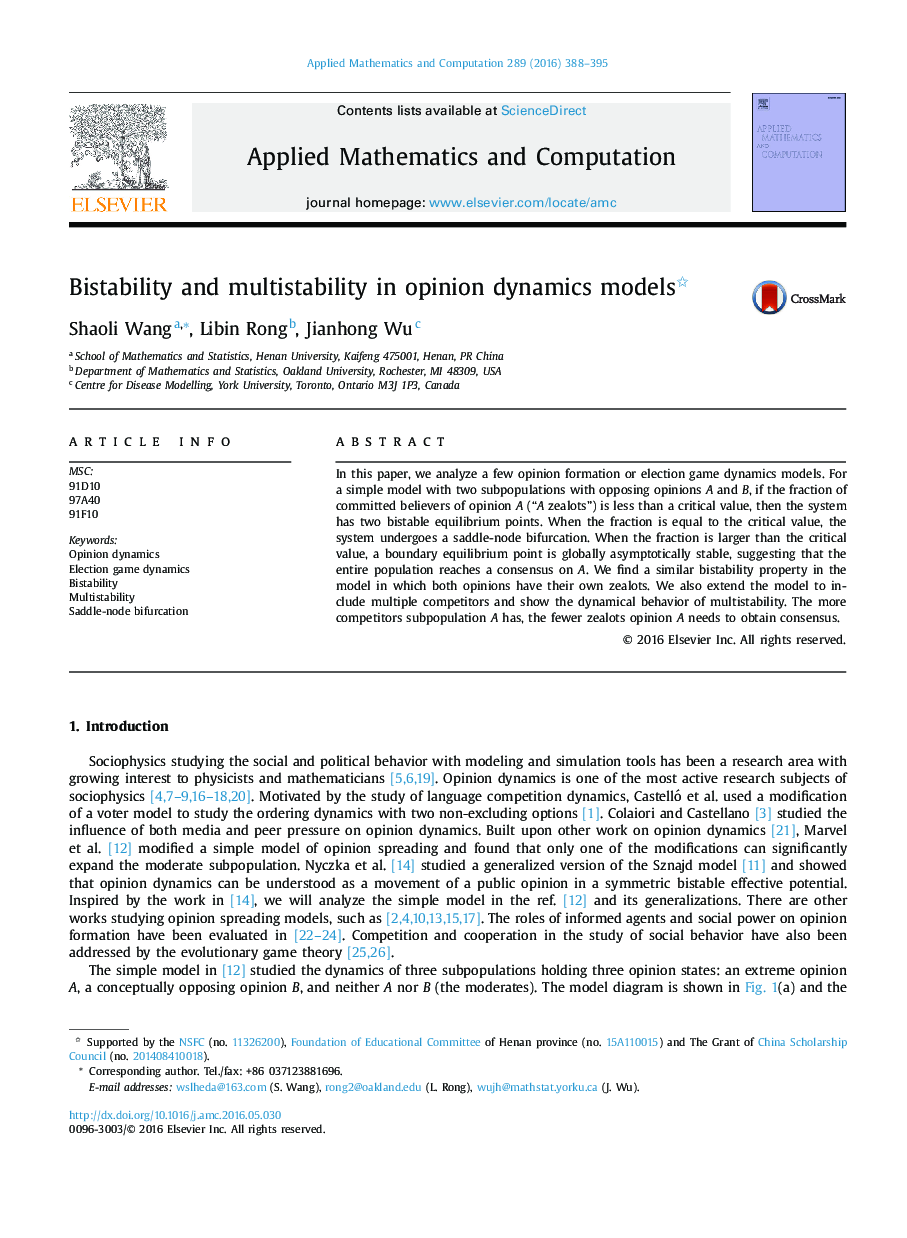| Article ID | Journal | Published Year | Pages | File Type |
|---|---|---|---|---|
| 4625711 | Applied Mathematics and Computation | 2016 | 8 Pages |
•We have mathematically analyzed several opinion dynamics models.•A simple model shows bistability and explains when extreme opinions prevail.•An extended model including multiple competitors shows multistability.
In this paper, we analyze a few opinion formation or election game dynamics models. For a simple model with two subpopulations with opposing opinions A and B, if the fraction of committed believers of opinion A (“A zealots”) is less than a critical value, then the system has two bistable equilibrium points. When the fraction is equal to the critical value, the system undergoes a saddle-node bifurcation. When the fraction is larger than the critical value, a boundary equilibrium point is globally asymptotically stable, suggesting that the entire population reaches a consensus on A. We find a similar bistability property in the model in which both opinions have their own zealots. We also extend the model to include multiple competitors and show the dynamical behavior of multistability. The more competitors subpopulation A has, the fewer zealots opinion A needs to obtain consensus.
